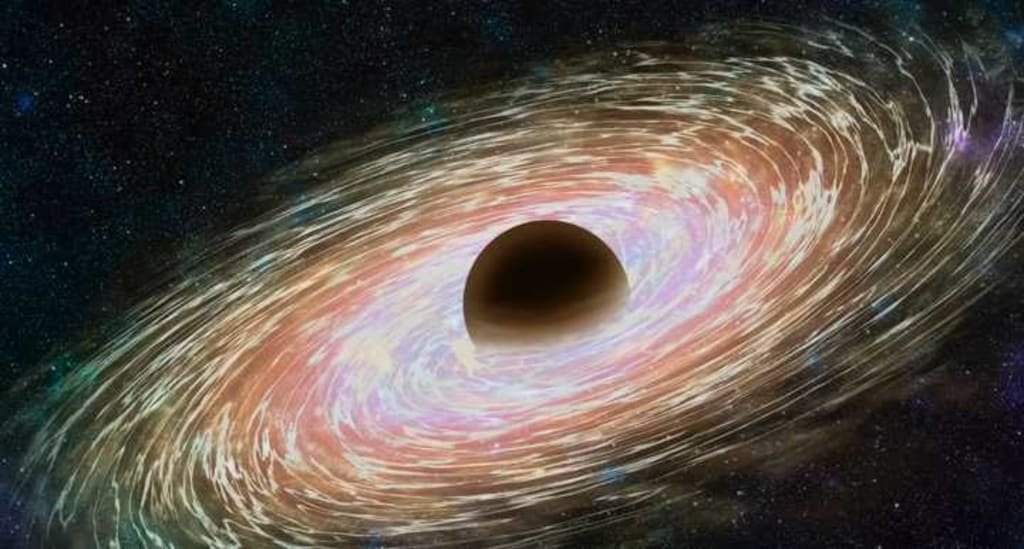
The black hole is an extremely mysterious object in the universe, it does not emit light, so we can not see its true face, and its gravity is extremely strong, all the matter close to its edge, will be torn apart and swallowed by it, but the good thing is that the known such objects are relatively distant from our solar system, will not affect the solar system.
In the center of our galaxy there is a super black hole - Sagittarius A*, this black hole is 4.31 million times the mass of the sun, and is also the gravitational center of the galaxy, it is deep in the core of the galaxy, and our solar system distance of about 26,000 light-years, but it is not the only black hole in the galaxy, nor is it the closest black hole. It is not the only black hole in the Milky Way, nor is it the closest black hole to us. Early estimates by scientists suggest that the number of black holes in the Milky Way may reach 1 million or even 100 million, so this kind of object is also common in the Milky Way.
The only way astronomers can determine the existence of a black hole is the effect of its gravity on the surrounding objects, such as the orbit of the stars around it, or the moment when the stars and other objects around it are stripped of their atmospheres by its gravity, astronomers can determine the existence of a black hole based on the abnormal conditions of the objects around it, but still can not directly find it, at best, only to find around it The accretion disk.
Perhaps some of our friends will say, scientists can also find the existence of black holes through the accretion disk of the strong light, gravitational waves, or X-rays released by the poles of the black hole, but, only when the black hole absorbs a lot of material will appear accretion disk, so the majority of black holes are not bright accretion disk, and the current level of human mastery of gravitational waves and X-ray detection, these two means are not at all The two methods are not able to find small black holes, and large black holes at a distance are not found by these two methods.
Scientists have recently discovered a black hole only 1500 light years away from our solar system, making it the closest known black hole to our solar system (in 2020 scientists claimed to have found a black hole only 1100 light-years away in a three-star system, but it is disputed whether it is the closest), it is not very massive, only equivalent to three suns, and is orbiting a red giant with the number V723 Mon By its influence on the companion red giant object, a team of astronomical researchers in the United States analyzed the periodic variations of the brightness and spectrum of the red giant V723 Mon through data recorded by several astronomical observatories, and discovered the existence of this black hole.
The black hole was named "Unicorn" by one of its discoverers, Jaywalking because the black hole is located in the constellation Unicorn, which is also known as Unicorn in the West. Although the existence of the "Unicorn" cannot be seen, through the analysis of the causes of the abnormal operation of the red giant V723 Mon, we can know that there is an invisible object dragging the red giant, and the strong gravitational force distorts it into the shape of a drop of water, to know that the volume of a black hole three times the mass of the Sun is very small, its diameter is no more than 10 km, but the volume of the red giant is Very large, can be hundreds of millions or even billions of times larger than the volume of the Sun, so the volume of this red giant than its next "unicorn" black hole trillions of times larger. But the black hole has not yet sucked its peripheral gas from the red giant, indicating that the distance between the two is not very close.
The "unicorn" black hole is also considered the smallest stellar black hole, because in the natural formation of stellar black holes, three times the mass of the sun is only the entry-level standard, if smaller than this mass can not form a black hole, only to form quark stars or neutron stars. Therefore, this black hole is also thought to be formed by a supernova explosion or the collision of two massive stars.
Scientists believe that the number of black holes like this is very large, and astronomy researcher Tamarind Jaywalking from Ohio State University says that more small black holes could be found if the search space is expanded.
About the Creator
Stajila
The progress of scientific research and its increasingly expanding fields will arouse our hope。






Comments
There are no comments for this story
Be the first to respond and start the conversation.